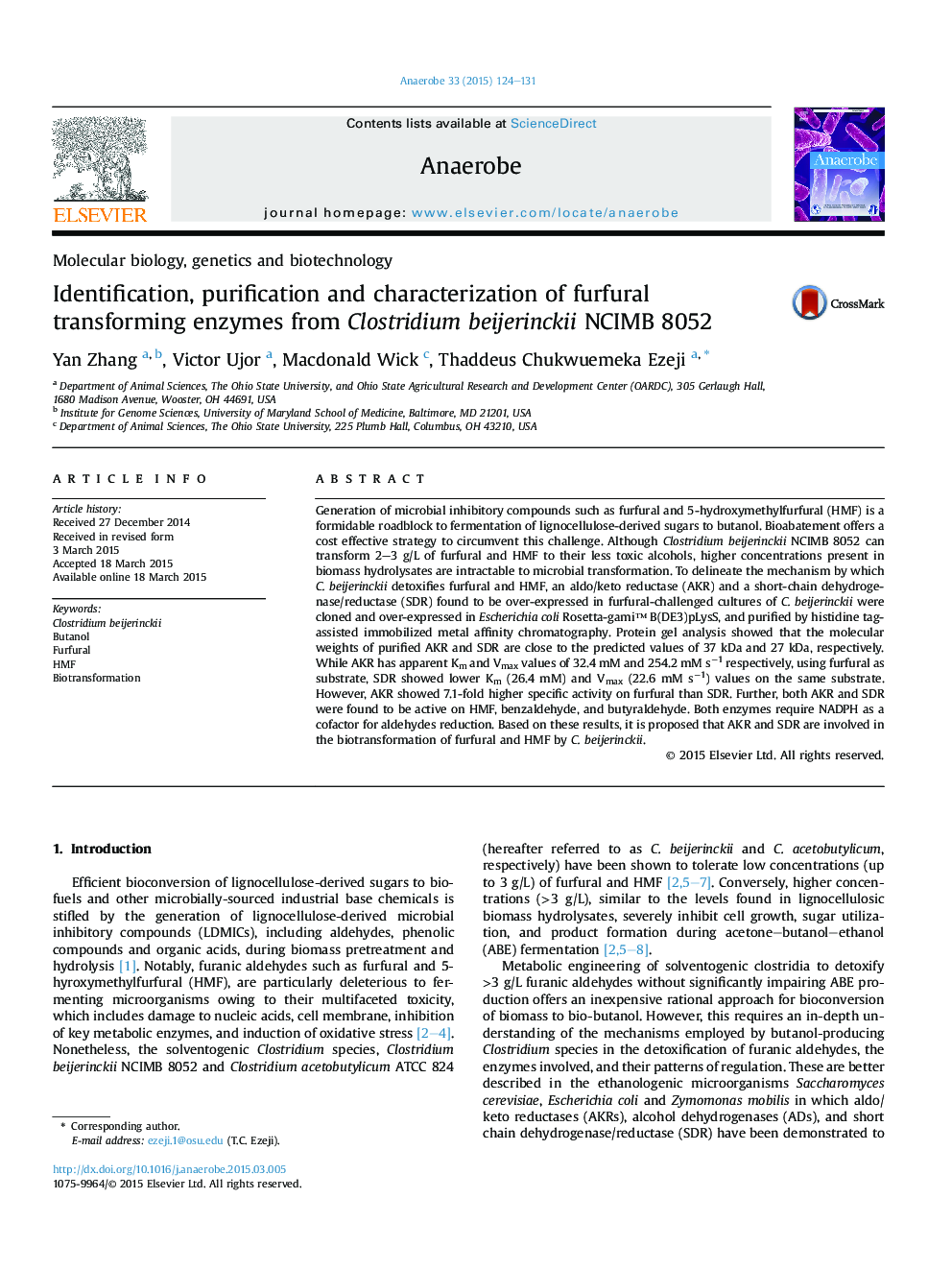| کد مقاله | کد نشریه | سال انتشار | مقاله انگلیسی | نسخه تمام متن |
|---|---|---|---|---|
| 3394903 | 1592830 | 2015 | 8 صفحه PDF | دانلود رایگان |

• Enzymes involved in the transformation of furfural by Clostridium beijerinckii were identified.
• C. beijerinckii furfural transforming genes were heterologously expressed in Escherichia coli.
• Cbei_3974 and Cbei_3904 genes partake in the conversion of furfural to furfuryl alcohol.
Generation of microbial inhibitory compounds such as furfural and 5-hydroxymethylfurfural (HMF) is a formidable roadblock to fermentation of lignocellulose-derived sugars to butanol. Bioabatement offers a cost effective strategy to circumvent this challenge. Although Clostridium beijerinckii NCIMB 8052 can transform 2–3 g/L of furfural and HMF to their less toxic alcohols, higher concentrations present in biomass hydrolysates are intractable to microbial transformation. To delineate the mechanism by which C. beijerinckii detoxifies furfural and HMF, an aldo/keto reductase (AKR) and a short-chain dehydrogenase/reductase (SDR) found to be over-expressed in furfural-challenged cultures of C. beijerinckii were cloned and over-expressed in Escherichia coli Rosetta-gami™ B(DE3)pLysS, and purified by histidine tag-assisted immobilized metal affinity chromatography. Protein gel analysis showed that the molecular weights of purified AKR and SDR are close to the predicted values of 37 kDa and 27 kDa, respectively. While AKR has apparent Km and Vmax values of 32.4 mM and 254.2 mM s−1 respectively, using furfural as substrate, SDR showed lower Km (26.4 mM) and Vmax (22.6 mM s−1) values on the same substrate. However, AKR showed 7.1-fold higher specific activity on furfural than SDR. Further, both AKR and SDR were found to be active on HMF, benzaldehyde, and butyraldehyde. Both enzymes require NADPH as a cofactor for aldehydes reduction. Based on these results, it is proposed that AKR and SDR are involved in the biotransformation of furfural and HMF by C. beijerinckii.
Journal: Anaerobe - Volume 33, June 2015, Pages 124–131